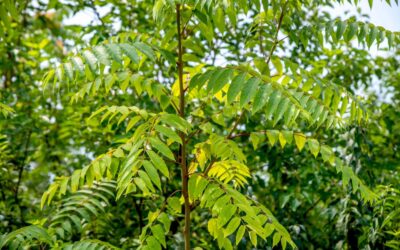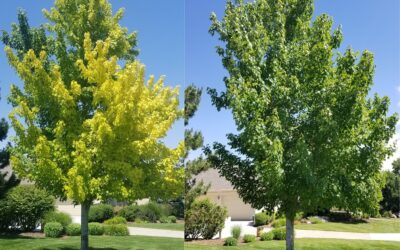The next time you check your 401k give a nod to the American sycamore. It was under the shade of one, also known as a buttonwood tree, that financiers gathered in New York City in 1792 to sign the Buttonwood Agreement, creating the New York Stock Exchange.
Age and Native Range
Botanists have found traces of sycamores as far back as 100 million years with evidence of heavy forestation northern North America and Greenland in the Cretaceous period, making it one of the oldest broadleaf trees. It spread into central Europe but had disappeared as a native tree by the time it was reintroduced during the 17th century.
The American sycamore is native across the southeastern third of the US from the Great Lakes to the Gulf Coast and from the Atlantic seaboard west to the eastern Great Plains. It is hardy in USDA zones 4-7. While not native to Colorado it has established itself along streams and rivers in the southeastern and western parts of the state.
Characteristics
The American sycamore is a large, fast-growing deciduous tree that can reach heights of over 100 feet with massive trunks over six feet in diameter. Young trees begin with a single trunk but as the tree grows the trunk can split into several secondary trunks.
The bark of American sycamores is brown on younger branches. Because it’s inelastic, it doesn’t expand as the tree grows causing large sections to peel off giving the trunk an attractive mottled appearance as the creamy under bark is exposed.
It has large, flat leaves up to 8 inches wide that resemble those of maples but grow alternately along its branches whereas maples grow in opposite pairs. The deeply lobed leaves are bright green on top and paler green below.
The American sycamore produces single round seed balls on individual 6-inch stalks.
American sycamores are preyed upon by the sycamore leaf beetle and Plane anthracnose disease, a fungal infection. While neither is a serious threat to the tree, they can result in partial defoliation, diminishing the tree’s attractiveness.
Varieties and Cultivars of Sycamores
Sycamores come in eleven varieties with the American (Platanus occidentalis) and Asian (P. orientalis) most widespread. A hybrid of the two, generally called the London planetree, is widely planted around the world, especially in urban areas, due to its ability to stand the rigors of city life.
The American Sycamore as a Landscape Tree
Because of its size, the American sycamore should be planted in large open areas. If used as a street tree, the planting area needs to be at least six feet wide to allow for the tree’s wide trunk.
The exfoliated trunk, while attractive, can leave large pieces of fallen bark. Along with dropped seed balls and twigs, this can make the sycamore a messy tree.
While it generally does well in urban landscapes, many people prefer the London planetree because of its adaptability and resistance to anthracnose fungus.
Donovan Arborists offers planting, and trimming services for American sycamores and other trees and shrubs as well as a complete landscape maintenance package for property in the Denver area.
We’re always happy to give free estimates to homeowners and property managers for any services they may need.



